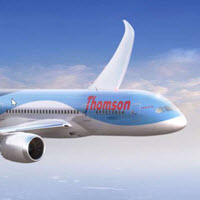Flying with disability making the headlines for the wrong reasons
- Written by Roberto Castiglioni
 In this day and age, even a straightforward concept like flying with a disability isn’t immune from the “fake news” pandemic.
In this day and age, even a straightforward concept like flying with a disability isn’t immune from the “fake news” pandemic.
We can blame the Russians for being the source of the “virus”. During the Cold War, Moscow and its allies fine-tuned the art of dezinformatsiya (disinformation). What this meant was to spread false and misleading information that would steer the public opinion into the direction of an undisclosed agenda.
Fast-forward 30 years and we have the same yet simplified concept, now known as “fake news”, once again making the headlines.
Last week, UK tabloids raced to cover the story of 47-year-old Alan Scrivener, alleging the man was being discriminated against by a UK airline because of his disability.
Mr. Scrivener said he had not been accepted for travel on a Thomson Airways flight because he did not meet the airline’s  safety criteria. In simpler words, he could not make his way to the emergency exit on his own or with the help of his partner.
safety criteria. In simpler words, he could not make his way to the emergency exit on his own or with the help of his partner.
At the time of booking, the man told the airline he would need an aisle chair to make his way to and from his seat. "Even if I was flying with my partner, there's no way she would be able to drag me to an emergency exit," he told Thomson staff.
Mr. Scrivener argued he had flown before without problems. However, the airline’s records indicate the man had ticked a box stating he was able to make his own way out of the plane in case of an emergency evacuation. "I honestly can't recall ticking that box," he said.
Anyone familiar with safety rules is fully aware that passengers with severe mobility impairments must travel with a companion able to help them evacuate the cabin in the unlikely event of an emergency.
This rule is in place because cabin crew may help disabled passengers only after all passengers left the plane and it is safe to do so.
 To put things into the right perspective, international safety protocols mandate a standard crew of four on a Ryanair Boeing 737 which can carry up to 189 passengers must direct and complete the evacuation of the cabin in 90 seconds.
To put things into the right perspective, international safety protocols mandate a standard crew of four on a Ryanair Boeing 737 which can carry up to 189 passengers must direct and complete the evacuation of the cabin in 90 seconds.
After this task is complete, cabin crew may help disabled passengers provided there is no fire onboard and it is safe to access the cabin.
For the sake of argument, allow me to look at this case from a different angle. Let’s imagine the airline accepts Mr. Scrivener for travel with full knowledge of his impairment and inability to evacuate the cabin, even if aided by a companion.
Let’s then imagine the plane crashes and the cabin catches fire. Everyone onboard but Scrivener makes it out alive.
Mainstream media would do good reporting naming and shaming the airline for disregarding safety rules that would have easily prevented the man’s death.
Access to air travel is a complex equation. Taking it out of context because of a slow news cycle is all but counterproductive. Let’s cheer for better reporting and less fake news.










